Newsletter Articles
End of Summer Gardening for Winter Harvests
Here it is August and now is the perfect time to plan your end-of-summer garden for a rich and bountiful winter Harvest. In fact, it’s very possible to grow all the produce you need for your holiday meals including Thanksgiving and Christmas. This newsletter focuses on a few vegetables that do well in fall and are welcome on most winter tables.
Tomatoes
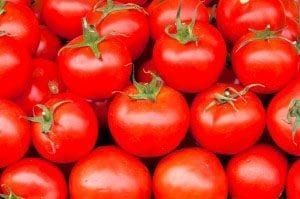 There are so many varieties of tomatoes available and many are perfect for fall Gardens. A good tip is to look at the day’s-to-harvest, which is available on most plant sticks or seed packets. Even in Southern California you’re racing against the colder weather and more importantly against the reduction in light that occurs after the winter solstice. Plants need light to grow and thrive and after winter the days become shorter.
There are so many varieties of tomatoes available and many are perfect for fall Gardens. A good tip is to look at the day’s-to-harvest, which is available on most plant sticks or seed packets. Even in Southern California you’re racing against the colder weather and more importantly against the reduction in light that occurs after the winter solstice. Plants need light to grow and thrive and after winter the days become shorter.
Smaller tomatoes tend to ripen quicker and a good focus is on cherry tomatoes such as Sun Golds and Sweet 100’s. Other options include Black Cherry tomatoes, Black Plum tomatoes, Brandywine, which are an awesome heirloom, and Cherokee Purple’s which are medium to large tomato with plenty of flavor.
Lettuces and Greens
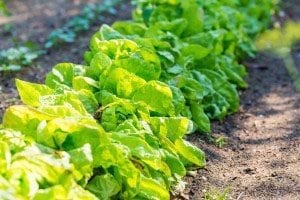 The end-of-summer garden is a welcome format for many types of lettuce. Butter crunch and head lettuces do well, and these crops generally have around a 30-day harvest date. This means that you can generally harvest lettuce in about 30 days. A tip to growing lettuce for most of the late summer, fall, and winter is to use successive gardening. This means every week you plant a new crop of lettuce and as one matures you replace it with another. In so doing, you have a constant supply of lettuce for your kitchen table.
The end-of-summer garden is a welcome format for many types of lettuce. Butter crunch and head lettuces do well, and these crops generally have around a 30-day harvest date. This means that you can generally harvest lettuce in about 30 days. A tip to growing lettuce for most of the late summer, fall, and winter is to use successive gardening. This means every week you plant a new crop of lettuce and as one matures you replace it with another. In so doing, you have a constant supply of lettuce for your kitchen table.
There are plenty of options for greens other than lettuce too. Many of the brassicas’ are perfect for end-of-summer gardens. However, you want to get them in by mid-August or early September so that they have time to 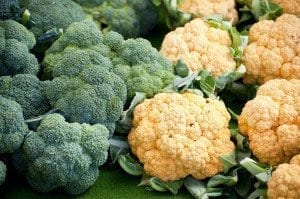 develop a strong root system before winter. In colder climates brassicas do just fine but only when they have sufficient time to develop healthy roots. Some options for brassicas include broccoli, cauliflower, Bok Choy, many mustard species, and salad favorites such as arugula. The end-of-summer garden is also a welcome place for micro-greens such as baby chard, and baby kale. In fact, the list of greens that you can grow in an early fall garden is long, and extensive. A good tip is always to grow what you eat and what you love.
develop a strong root system before winter. In colder climates brassicas do just fine but only when they have sufficient time to develop healthy roots. Some options for brassicas include broccoli, cauliflower, Bok Choy, many mustard species, and salad favorites such as arugula. The end-of-summer garden is also a welcome place for micro-greens such as baby chard, and baby kale. In fact, the list of greens that you can grow in an early fall garden is long, and extensive. A good tip is always to grow what you eat and what you love.
Fruit for Winter
 In the summer is a great time to start planning for winter fruit. It’s probably too late for this year for many types of fruit, but add them to your list for spring gardening. A beautiful option for end-of-summer gardens are strawberries. Strawberries have a short days-to-harvest rating, and they make wonderful additions to fall and winter dishes.
In the summer is a great time to start planning for winter fruit. It’s probably too late for this year for many types of fruit, but add them to your list for spring gardening. A beautiful option for end-of-summer gardens are strawberries. Strawberries have a short days-to-harvest rating, and they make wonderful additions to fall and winter dishes.
As you think about fall and winter fruit think about adding apples and persimmons to your list of plants to include this coming spring. Apples tend to mature in September and October and the Fuyu variety of persimmons is wonderful for October, November and December harvests.
Roots and Tubers
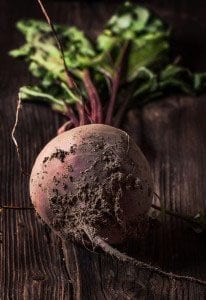 Mid-August and September are wonderful times to plant most root crops. Beets, for example, are a wonderful example. Most varieties of beets mature in 30 to 40 days making them readily available for Fall and Winter meals. Other options include carrots and parsnips.
Mid-August and September are wonderful times to plant most root crops. Beets, for example, are a wonderful example. Most varieties of beets mature in 30 to 40 days making them readily available for Fall and Winter meals. Other options include carrots and parsnips.
Beans and Other Vegetables
Pole beans are good bet for August planting as they have a short day-to-harvest ratio, and they fit into many meals throughout fall and winter. Another option are artichokes which are available as green globe or purple globe, and both produce plenty of artichokes for your table.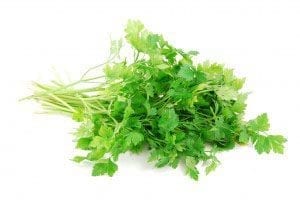 As you plan your end-of-summer garden, don’t forget a few of the many herbs such as cilantro, dill, chives, and parsley. This is a time of year also to consider coloreds but look for a variety that is heat tolerant and proven not to bolt.
As you plan your end-of-summer garden, don’t forget a few of the many herbs such as cilantro, dill, chives, and parsley. This is a time of year also to consider coloreds but look for a variety that is heat tolerant and proven not to bolt.
A good tip for planning your end-of-summer garden is to sit down and make a list of all the foods that you eat during fall and winter. From this list you can develop a smaller list of plants for your garden. There are a couple of tricks to growing plenty of food in small spaces and one of those that we talked about is successive gardening. If you know ahead of time that you’re going to use a lot of green beans or a lot of broccoli then you want to be able to have harvests that range throughout fall and winter. This means every week you want to be able to go out to your garden and pick the vegetables that you need. The problem is that many crops mature at the same time and then you’ll either have to process these foods or they go to waste. When you practice successive gardening you plant a little bit of one variety of vegetable every week so that as one crop matures another is approaching maturity. By using successive gardening you control the harvest dates and this allows you to have fresh vegetables pretty much all season long.
For help with planning your garden vegetable list, stop by one of our nurseries and chat up one of our experts. We’re happy to answer your questions, and we remind you that this is a time of year when everybody wants to put in their end-of-summer garden. This means plant varieties will change on a daily basis at all of our five locations. If you’re looking for something special make sure to call ahead to make sure we have it in stock. You can also visit us online or drop by in person.
Do you like what you see? Sign up for our weekly newsletter to get content like this every week!

